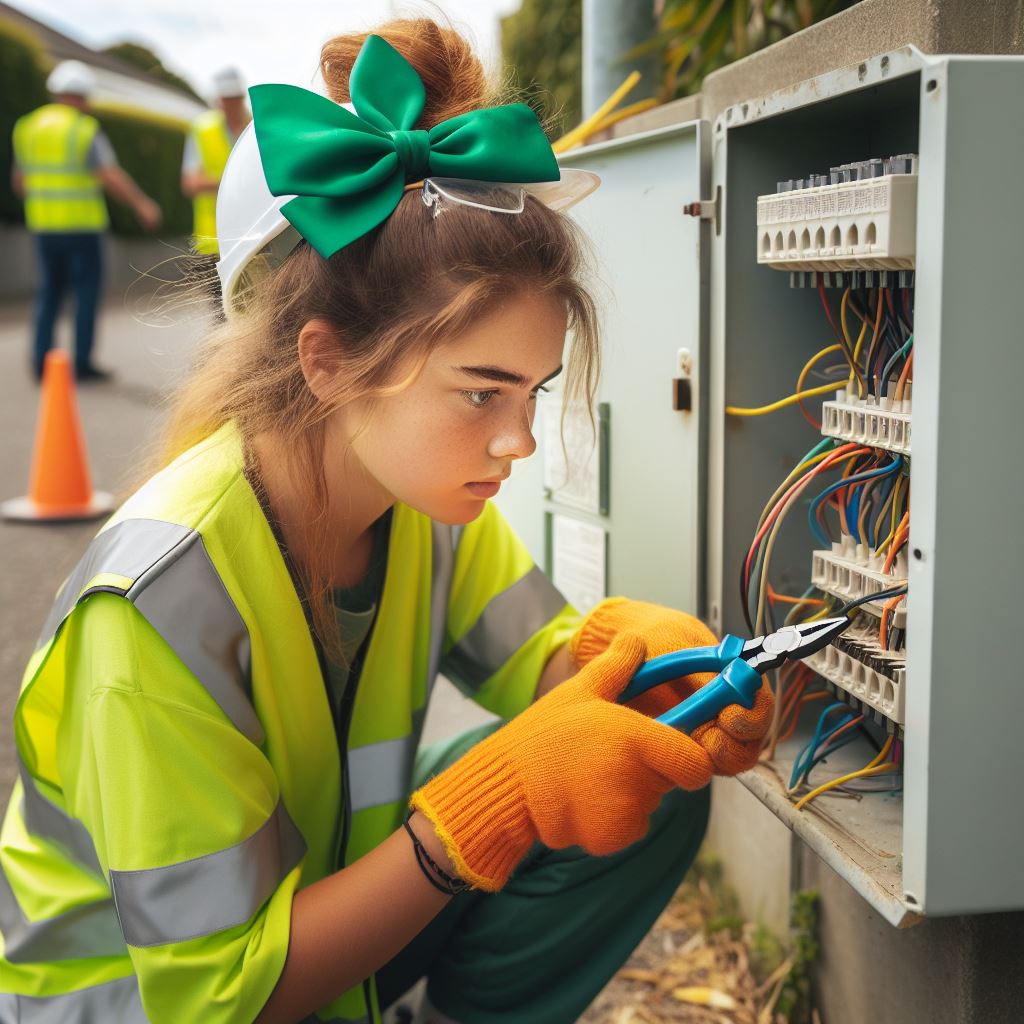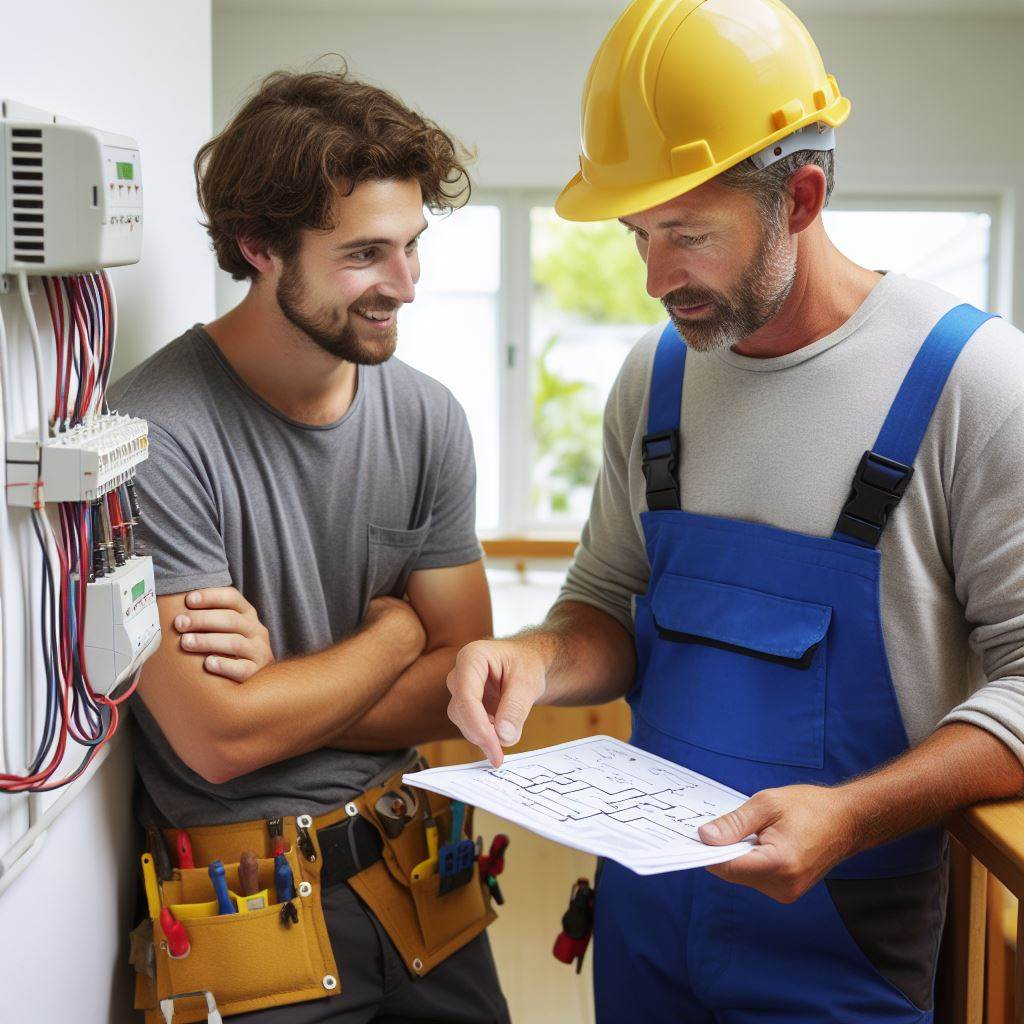Introduction
Understanding electrical safety standards is crucial for all stakeholders in New Zealand’s electrical industry.
These standards enforce safety protocols. This guide demystifies electrical safety standards in New Zealand. They protect individuals, properties, and the environment.
Compliance with standards is mandatory for electricians, contractors, and inspectors. Understanding safety standards ensures safe electrical practices.
Regulatory bodies in New Zealand govern electrical safety standards. They establish and enforce standards to prevent accidents.
Adherence to standards mitigates risks in electrical work, safeguarding lives and investments. Standards cover wiring, equipment, maintenance, and inspection procedures.
They evolve with technological advancements, integrating best practices. Compliance enhances public trust and reflects professionalism. Non-compliance can lead to legal consequences and safety hazards.
Awareness and adherence are paramount. This blog series explores key electrical safety standards.
Insights into compliance and best practices are provided. Understanding safety standards empowers stakeholders to make informed decisions.
It fosters a culture of safety and accountability. Adhering to standards contributes to a safer environment, protecting lives and reputations.
The following sections unravel the complexities of electrical safety standards. Practical guidance and compliance resources are offered.
Join us as we navigate through electrical safety standards in New Zealand. Together, let’s prioritize safety in installations.
Overview of Electrical Safety Standards
Purpose and Significance of Electrical Safety Standards
- Electrical safety standards are essential to protect people, property, and the environment from electrical hazards.
- These standards ensure that electrical installations are safe, reliable, and meet industry requirements.
- Compliance with these standards reduces the risk of electrical accidents, injuries, and fatalities.
- Electrical safety standards also promote uniformity and consistency in electrical practices across New Zealand.
Role of Regulatory Entities in Setting and Maintaining Standards
Electrical Workers Registration Board (EWRB)
- EWRB is responsible for regulating and registering electrical workers in New Zealand.
- They develop and enforce electrical safety standards, guidelines, and codes of practice.
- EWRB conducts audits and assessments to ensure compliance with the established standards.
Energy Safety (ES)
- ES is a division of the Ministry of Business, Innovation and Employment (MBIE).
- It is responsible for promoting and enforcing electrical safety standards in New Zealand.
- ES develops and reviews regulations, guidelines, and compliance documents for electrical installations.
Standards New Zealand (SNZ)
- SNZ is a non-profit organization responsible for developing and maintaining national standards.
- They work in collaboration with industry stakeholders, regulators, and experts to create electrical safety standards.
- SNZ ensures that the standards adapt to technological advancements and evolving safety requirements.
New Zealand Electrical Testing Board (NZETB)
- NZETB is responsible for verifying the competency of electrical workers through licensing examinations.
- They contribute to the development and maintenance of electrical safety standards in collaboration with EWRB and SNZ.
- NZETB ensures that electrical workers are knowledgeable and skilled to work safely with electrical installations.
Electrical Contractors Association of New Zealand (ECANZ)
- ECANZ represents electrical contractors in New Zealand and promotes electrical safety practices.
- They provide input in the development of electrical safety standards and contribute to their maintenance.
- ECANZ educates and trains electrical contractors to ensure compliance with the established standards.
Ministry of Business, Innovation and Employment (MBIE)
- MBIE is the government agency responsible for labor, energy, and building regulations in New Zealand.
- They oversee the implementation, enforcement, and review of electrical safety standards.
- MBIE collaborates with other regulatory entities, such as EWRB, ES, and SNZ, to ensure consistent standards implementation.
Basically, electrical safety standards play a crucial role in ensuring the safety and reliability of electrical installations in New Zealand.
Regulatory entities such as EWRB, ES, SNZ, NZETB, ECANZ, and MBIE are responsible for setting, maintaining, and enforcing these standards.
Their collaboration ensures that electrical workers, installations, and practices meet the necessary safety requirements, contributing to a safer electrical environment.
Key Electrical Safety Standards in New Zealand
- AS/NZS 3000:2018 (Electrical installations – Wiring Rules): This standard provides requirements for electrical installations in New Zealand, ensuring safety, performance, and efficiency.
- AS/NZS 3012:2019 (Electrical installations – Construction and demolition sites): It focuses on electrical safety in construction and demolition sites, covering design, installation, and testing.
- AS/NZS 3001:2008 (Electrical installations – Transportable structures and vehicles): This standard defines safety requirements for electrical installations in transportable structures and vehicles.
- AS/NZS ISO 31000:2018 (Risk management – Guidelines): It provides a framework for managing risks associated with electrical systems and equipment.
- AS/NZS 3760:2010 (In-service safety inspection and testing of electrical equipment): This standard outlines procedures for testing and inspecting electrical equipment to ensure its safety during use.
- AS/NZS 4836:2011 (Safe working on or near low-voltage electrical installations and equipment): It sets safety requirements for working on or near low-voltage electrical installations and equipment.
- AS/NZS 3002:2008 (Electrical installations – Shows and carnivals): This standard focuses on electrical safety in temporary installations used in shows and carnivals.
AS/NZS 3000:2018
The purpose of this standard is to ensure electrical installations in New Zealand are safe, reliable, and comply with regulatory requirements.
It covers wiring practices, electrical equipment selection, protection against electrical faults, and inspection and testing procedures for new and existing installations.
AS/NZS 3012:2019
This standard aims to prevent electrical accidents and incidents on construction and demolition sites.
It provides guidelines for the safe design, installation, and maintenance of electrical systems in these environments.
It covers general requirements, temporary electrical installations, and earthing systems on construction sites.
AS/NZS 3001:2008
AS/NZS 3001:2008 outlines electrical safety requirements for transportable structures and vehicles, including caravans, mobile homes, and trailers.
It covers electrical connection, wiring, earthing, and installation of electrical equipment in these structures to ensure safety during transportation and use.
AS/NZS ISO 31000:2018
This standard provides a risk management framework for organizations dealing with electrical systems and equipment.
It assists in identifying and assessing potential risks associated with electrical installations, enabling the implementation of effective measures to control or mitigate those risks.
AS/NZS 3760:2010
AS/NZS 3760:2010 specifies requirements for the in-service safety inspection and testing of electrical equipment.
It includes procedures for visual inspections, electrical testing, and tagging of the equipment to ensure it remains safe for use and complies with applicable regulations.
AS/NZS 4836:2011
This standard sets out safety requirements for personnel working on or near low-voltage electrical installations and equipment.
It covers safe working practices, risk control measures, training requirements, and the use of appropriate personal protective equipment to minimize the risk of electric shock and other electrical hazards.
AS/NZS 3002:2008
AS/NZS 3002:2008 focuses on electrical safety in shows and carnivals where temporary electrical installations are used.
It covers requirements for construction, installation, testing, and maintenance of electrical systems at such events, ensuring compliance with safety standards to protect both the public and workers involved.
Read: Kiwi Landscaping Success Stories
Implementation and Compliance
Process of Implementing Electrical Safety Standards in New Zealand
- The implementation of electrical safety standards in New Zealand is a rigorous process.
- The first step involves the development and establishment of safety standards by regulatory authorities.
- These standards are based on international best practices and are regularly reviewed to ensure effectiveness.
- Once the standards are established, they are communicated to all relevant stakeholders through various channels.
- Training programs and workshops are conducted to educate electrical contractors and inspectors about the new standards.
- These programs emphasize the importance of electrical safety and provide guidance on compliance.
- Electrical contractors play a crucial role in implementing safety standards at the ground level.
- They are responsible for ensuring that all installations and electrical work meet the required standards.
- Contractors must have a thorough understanding of the regulations and guidelines set by the authorities.
- Regular inspections are carried out by certified electrical inspectors to verify compliance.
- Inspectors have the authority to issue warnings or penalties if any non-compliance is found.
- The role of building owners is equally important in ensuring compliance with electrical safety standards.
- Building owners must engage qualified electrical contractors for any electrical work in their premises.
- They are responsible for maintaining the electrical systems and ensuring their safety.
- Regular inspections, maintenance, and repairs must be conducted to prevent any potential hazards.
Responsibilities of Different Stakeholders
- Electrical contractors are responsible for implementing safety standards during installation and maintenance.
- They must ensure that all electrical work meets the requirements specified by the authorities.
- Contractors should follow best practices, use quality materials, and employ skilled workforce.
- Inspectors play a vital role in enforcing compliance with electrical safety standards.
- They conduct thorough inspections to identify any potential risks or non-compliance.
- If non-compliance is found, inspectors may issue notices for rectification or impose fines.
- Building owners are accountable for the safety of electrical installations in their premises.
- They must engage qualified contractors, conduct regular inspections, and maintain records.
- Owners should provide necessary resources to ensure compliance and address any identified deficiencies.
- Regulatory authorities are responsible for setting and updating electrical safety standards.
- They must communicate the standards effectively and provide guidance to stakeholders.
- Authorities also oversee the inspection and enforcement processes to maintain compliance.
- Government agencies collaborate with industry associations to promote safety awareness.
- They conduct awareness campaigns, provide educational materials, and facilitate training programs.
Therefore, the implementation and compliance of electrical safety standards in New Zealand require active participation from various stakeholders.
Electrical contractors, inspectors, building owners, and regulatory authorities all have important roles in ensuring that the standards are effectively implemented and adhered to.
By working together and fulfilling their responsibilities, these stakeholders contribute to a safer electrical environment in New Zealand.
Read: Pests & Plants: NZ Landscaping Guide
New Zealand Wiring Rules
Importance of the New Zealand Wiring Rules (AS/NZS 3000) in maintaining electrical safety
The New Zealand Wiring Rules (AS/NZS 3000) play a critical role in ensuring electrical safety within the country.
These rules are designed to provide guidelines and requirements for the installation and maintenance of electrical wiring systems, ensuring they are safe and compliant with national standards.
One of the key benefits of the Wiring Rules is the promotion of consistency and uniformity across electrical installations in New Zealand.
Personalized Career Consulting
Unlock your potential with expert career advice tailored to your goals. Get personalized guidance and actionable steps toward your dream career in New Zealand.
Get StartedBy following these rules, electricians and electrical contractors can ensure that their work meets the required safety standards.
Additionally, the Wiring Rules help protect individuals and property from electrical hazards, reducing the risk of electrical accidents and fires.
Key sections and requirements of the Wiring Rules
Now let’s discuss the key sections and requirements of the New Zealand Wiring Rules.
- Scope and Definition – This section provides an overview of the Wiring Rules and defines various terms used throughout the document.
- General Installation Requirements – Here, the Wiring Rules cover general principles for electrical installations, including selection and use of equipment.
- Wiring Systems and Cables – This section specifies requirements for different types of cables and wiring systems, ensuring their safe installation and usage.
- Circuit Arrangement and Protection – The Wiring Rules outline the appropriate protection mechanisms, such as circuit breakers and fuses, to prevent electrical faults and overloads.
- Earthing and Bonding – This section focuses on the importance of effective earthing and bonding systems to protect against electric shocks and faults.
- Special Installations or Locations – The Wiring Rules provide specific requirements for installations in special locations, such as swimming pools, hazardous areas, and medical locations.
- Inspection, Testing, and Certification – Here, the Wiring Rules explain the procedures for inspecting, testing, and certifying electrical installations to ensure compliance and safety.
- Energy Efficiency – This section highlights the importance of energy-efficient electrical installations and provides guidelines for achieving efficient use of electricity.
Electricians, contractors, and homeowners must familiarize themselves with key sections of the Wiring Rules. They ensure safe electrical work.
The New Zealand Wiring Rules (AS/NZS 3000) maintain electrical safety. Guidelines and requirements are provided. They promote consistency and protect from hazards.
Understanding and adhering to these rules are essential. They ensure safety for all involved in electrical work.
Read: Sustainable Gardening Practices in NZ

Testing and Certification
Testing and certification are crucial in ensuring that electrical safety standards are met in New Zealand.
The process of electrical testing and certification in New Zealand involves several important steps.
- Initial inspection: Qualified electricians perform a thorough inspection of the electrical systems to identify potential hazards.
- Testing: Various tests, such as insulation resistance and earth fault loop impedance, are conducted to assess the safety of the electrical installations.
- Verification: The test results are verified against the required safety standards, ensuring compliance.
- Certification: If the electrical systems meet the safety standards, a certificate of compliance is issued.
The role of qualified electricians in the testing and certification process is vital.
- They have the knowledge and expertise to identify potential hazards and ensure compliance with safety standards.
- Qualified electricians follow strict guidelines and standards to conduct accurate and reliable electrical testing.
- They use specialized testing equipment, such as multimeters, insulation resistance testers, and loop impedance testers, to perform various tests.
- Their expertise in using testing equipment ensures accurate results and minimizes the risk of electrical accidents.
Testing and certification play a significant role in promoting electrical safety in New Zealand.
Ensuring electrical systems meet safety standards is not only essential for the protection of individuals but also for compliance with regulations.
By adhering to these standards, potential hazards and risks associated with electricity can be prevented.
Electrical testing and certification provide assurance to homeowners, businesses, and regulatory authorities.
It guarantees that electrical installations are safe and will not pose a risk of electric shocks, fires, or other accidents.
Compliance with electrical safety standards also helps in maintaining insurance coverage for properties.
Businesses that fail to meet these standards may face legal consequences and reputation damage.
Transform Your Career with a Professional CV and Cover Letter
Stand out to employers with an ATS-optimized resume and tailored cover letter designed to match your dream role. Let us craft your job application materials for success!
Get StartedIn general, testing and certification are integral parts of ensuring electrical safety standards in New Zealand.
Qualified electricians play a crucial role in the process by conducting thorough inspections, performing accurate tests, and using specialized equipment.
By adhering to these standards, the risk of electrical accidents is minimized, giving confidence to individuals and regulatory authorities.
It is essential to prioritize electrical safety to protect lives, properties, and comply with regulations governing the industry.
Read: Designing Outdoor Spaces in NZ
Building Codes and Electrical Safety
In New Zealand, building codes have a close relationship with electrical safety standards. These codes incorporate specific requirements to ensure safe electrical practices during the construction of buildings.
Relationship between Building Codes and Electrical Safety
- Building codes and electrical safety standards go hand in hand to promote safe construction practices.
- Electrical safety standards are an integral part of building codes and serve as guidelines.
- Building codes help regulate electrical installations in different types of structures.
- Electrical safety standards ensure compliance with regulations throughout the construction process.
- Building codes and electrical safety standards work together to minimize the risk of electrical accidents.
Incorporating Electrical Safety Requirements
- Building codes incorporate electrical safety requirements to ensure proper installation and maintenance of electrical systems.
- These requirements aim to protect individuals from hazards associated with electricity in buildings.
- Electrical safety requirements in building codes cover various aspects, including wiring, grounding, and insulation.
- Building codes mandate compliance with specific standards for electrical installations.
- Electrical safety requirements ensure the use of appropriate materials and equipment during construction.
- Building codes also outline procedures for inspections to verify compliance with electrical safety standards.
- Electrical safety requirements in building codes help prevent electrical fires and electrocution incidents.
- These requirements also ensure the safety of building occupants by minimizing electrical hazards.
- Building codes require electrical systems to be designed and installed by qualified professionals.
- Regular maintenance and inspections are necessary to ensure continued compliance with electrical safety standards.
Overall, building codes and electrical safety standards in New Zealand work together to ensure safe construction practices and minimize electrical hazards.
Compliance with these requirements is crucial to protect individuals and property from potential electrical accidents.
Updates and Changes
- In recent years, New Zealand has made significant updates and changes to its electrical safety standards.
- One major change is the introduction of the Electrical Workers Registration Board (EWRB) in 2010.
- The EWRB is responsible for setting and monitoring the standards for electrical work in New Zealand.
- It has implemented a new licensing and registration system to ensure only competent and qualified individuals can carry out electrical work.
- Another important update is the adoption of the AS/NZS 3000:2018 Wiring Rules.
- This revised standard sets out the requirements for the design, construction, and inspection of electrical installations in New Zealand.
- It includes updates on safety switches, isolation switches, and emergency lighting requirements.
- Additionally, there have been changes in the testing and certification of electrical appliances.
- The Electrical Safety Regulations 2010 now require regular testing and certification to ensure appliances are safe to use.
- This includes electrical appliances used in workplaces, rental properties, and homes.
Need to Stay Up to Date
- It is crucial for professionals in the electrical industry to stay up to date with these changes.
- The updated electrical safety standards aim to improve safety and prevent electrical accidents and injuries.
- Professionals need to be aware of these changes to ensure they are providing safe and compliant electrical work.
- Failure to comply with the updated standards can result in severe penalties, legal issues, and loss of reputation for professionals.
- Staying up to date also allows professionals to offer the best service to their clients and ensure their electrical systems are safe.
- Regularly attending training courses, seminars, and workshops can help professionals stay informed about the changes.
- It is also essential to regularly review and update electrical procedures, policies, and documentation in light of the new standards.
- Professionals should actively participate in industry forums, discussions, and organizations to stay informed.
- The EWRB also provides resources, guidance, and updates on their website, making it an essential source of information.
- By staying up to date with the latest changes in electrical safety standards, professionals can protect themselves, their clients, and the public from electrical hazards.
In essence, New Zealand has implemented significant updates and changes to its electrical safety standards in recent years.
Professionals in the electrical industry must stay up to date with these changes to ensure compliance and provide safe electrical work.
Regular training, participation in industry forums, and utilizing resources from the EWRB are essential for staying informed.
By doing so, professionals can enhance safety, avoid penalties, and maintain a good reputation in the industry.
Conclusion
Importance of electrical safety standards in New Zealand
Electrical safety standards play a crucial role in ensuring the safety of individuals and property in New Zealand.
It is imperative to be aware of these standards, comply with them, and regularly update them to minimize the risk of electrical accidents.
By following these standards, we can create a safer environment in our homes, workplaces, and public spaces.
The need for awareness, compliance, and regular updates to ensure electrical safety in various settings
We cannot stress enough the importance of awareness, compliance, and regular updates when it comes to electrical safety.
Neglecting these standards can lead to devastating consequences, including injury, damage, or even loss of life. Therefore, it is crucial to prioritize electrical safety and take necessary precautions to prevent accidents.
Inviting readers to engage further or seek professional help for any questions or concerns regarding electrical safety standards
If you have any questions or concerns regarding electrical safety standards, we encourage you to engage in further research or seek professional help.
Electrical safety is a serious matter, and it is always better to be safe than sorry. Together, we can create a safer and more secure New Zealand for everyone.




